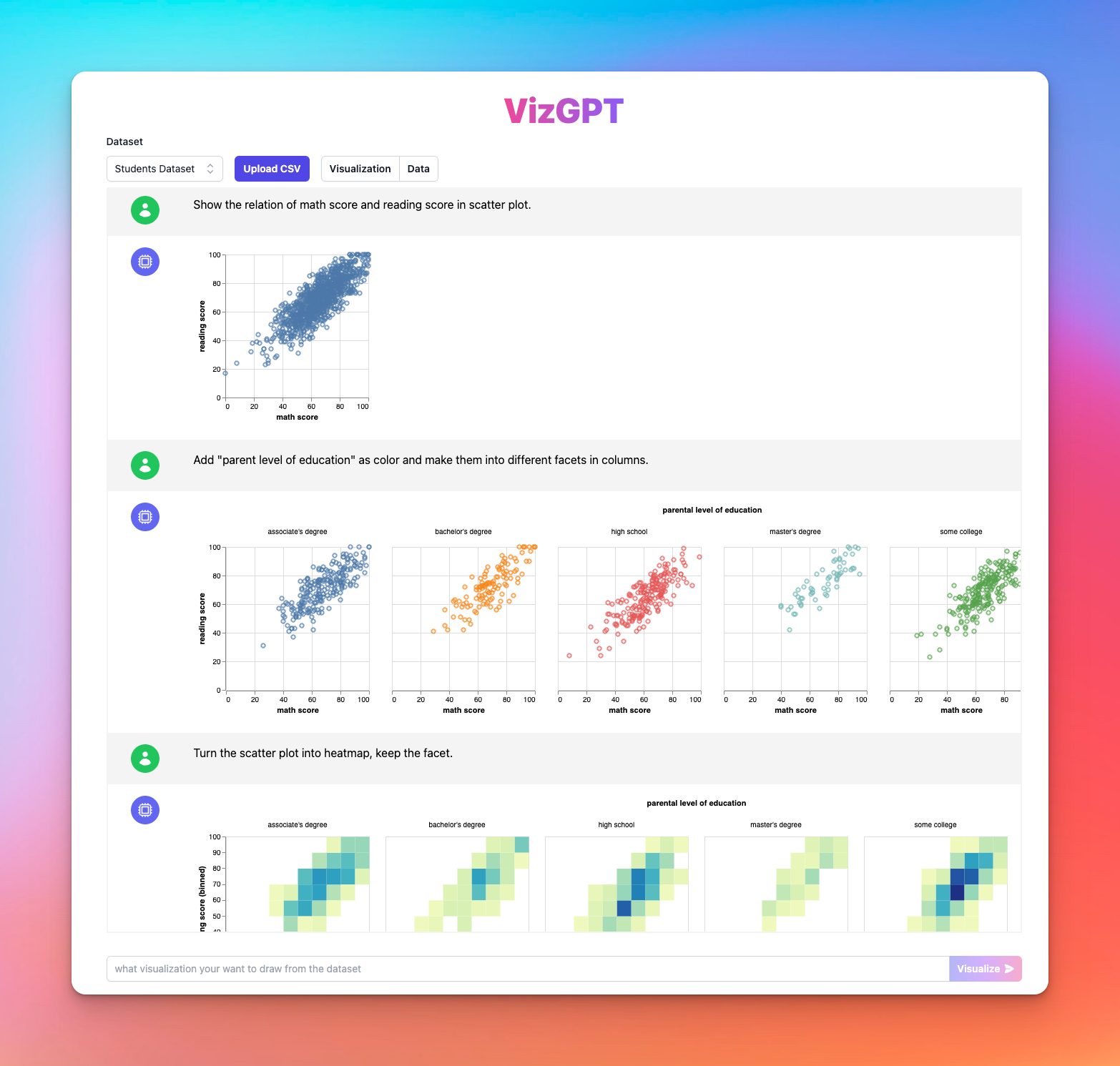Unleashing the Power of Database Visualization: Top 7 Tools
Published on
In the world of data, a well-planned and organized data architecture is crucial. From a beginner data analyst to a seasoned data scientist, everyone can appreciate the importance of visualizing database structures. And luckily, there's no shortage of free, robust tools that can help. Today, we're spotlighting seven of the best free database visualization tools available.
1. Visualize Data with ChatGPT
ChatGPT is the hottest name in the Tech World. Imagine this, isn't it fantastic that you can ignore all the complicated technical details and coding work, by generating visualization from your data with the help of ChatGPT? Well, luckily there is a tool that perfectly fits your need: VizGPT (opens in a new tab).
Powered by ChatGPT, VizGPT allows you to build complex visualizations step by step through chatting, instead of designing a large prompt at once. This makes it ideal for users who are not familiar with data visualization tools or data transformations. For example, you can easily create a Heatmap (opens in a new tab) in VizGPT like this:
With VizGPT, you can ignore all the additional hassle by simply uploading a CSV or Excel file and asking a question in natural language. If you want to work on more complicated databases such as Google Big Query, Clickhouse, Snowflake, and create high dimensional visualizations, you might consider RATH (opens in a new tab) as the more powerful tool. Here's a demo video of using RATH to Analyze Data with one click:
RATH loves Open Source. You can read RATH Documentation (opens in a new tab) and check out RATH GitHub (opens in a new tab) for more details about its features.
2. Navigating the Simplicity of Diagrams.net
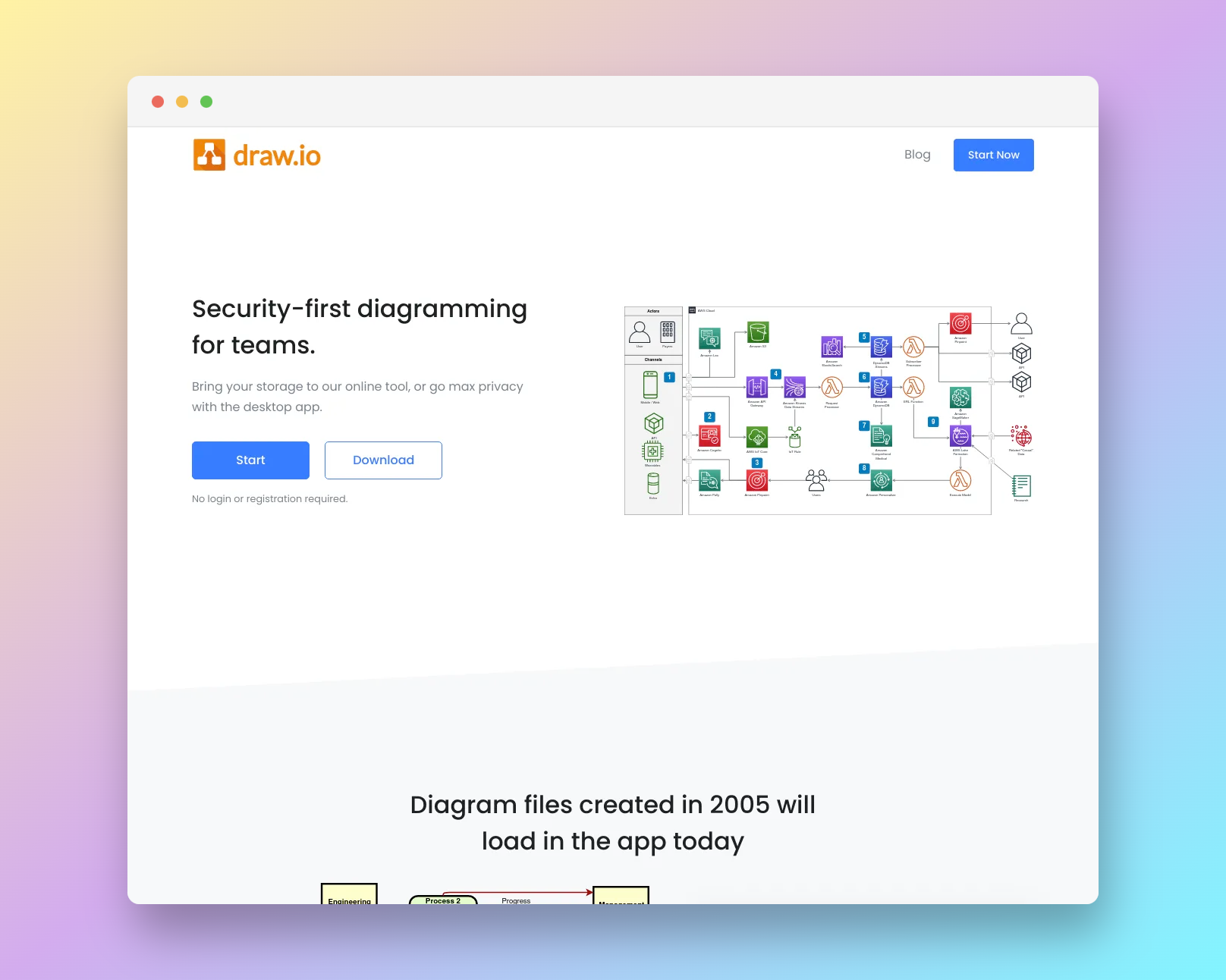
Formerly known as Draw.io, Diagrams.net provides a straightforward, open-source platform for database visualization right in your browser. It's available for free to the majority of users, only charging for integration with Atlassian's suite of products.
Diagrams.net offers a hassle-free user experience, allowing users to dive right into a drag-and-drop interface without any pesky sign-up procedures. You can start diagramming the moment you visit the website. Their mission is to deliver high-quality diagramming software for everyone, underlining their belief that value, not lock-in, should motivate customer payments.
3. Coding and Designing with Dbdiagram
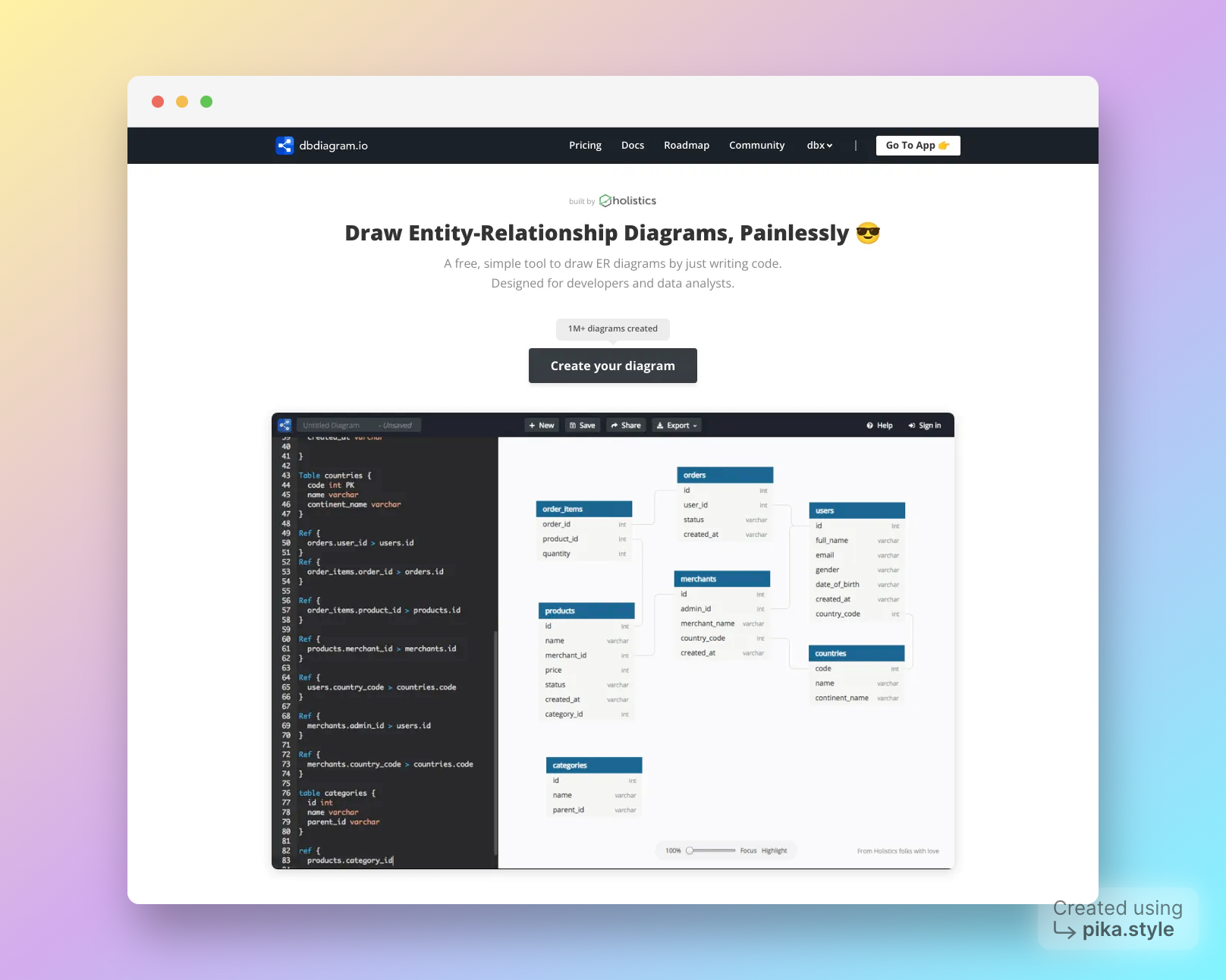
Dbdiagram.io stands out as a developer-centric online tool for database diagramming. With a code-based user interface, Dbdiagram encourages you to create up to 10 diagrams at no charge.
Unlike Diagrams.net, Dbdiagram relies on coding for table creation. Once you've coded a table, you can then drag and drop it on the interface. The tool follows a freemium model, banking on users' experience with the first 10 diagrams to consider investing $9/month for more.
4. Learning with ERD Plus
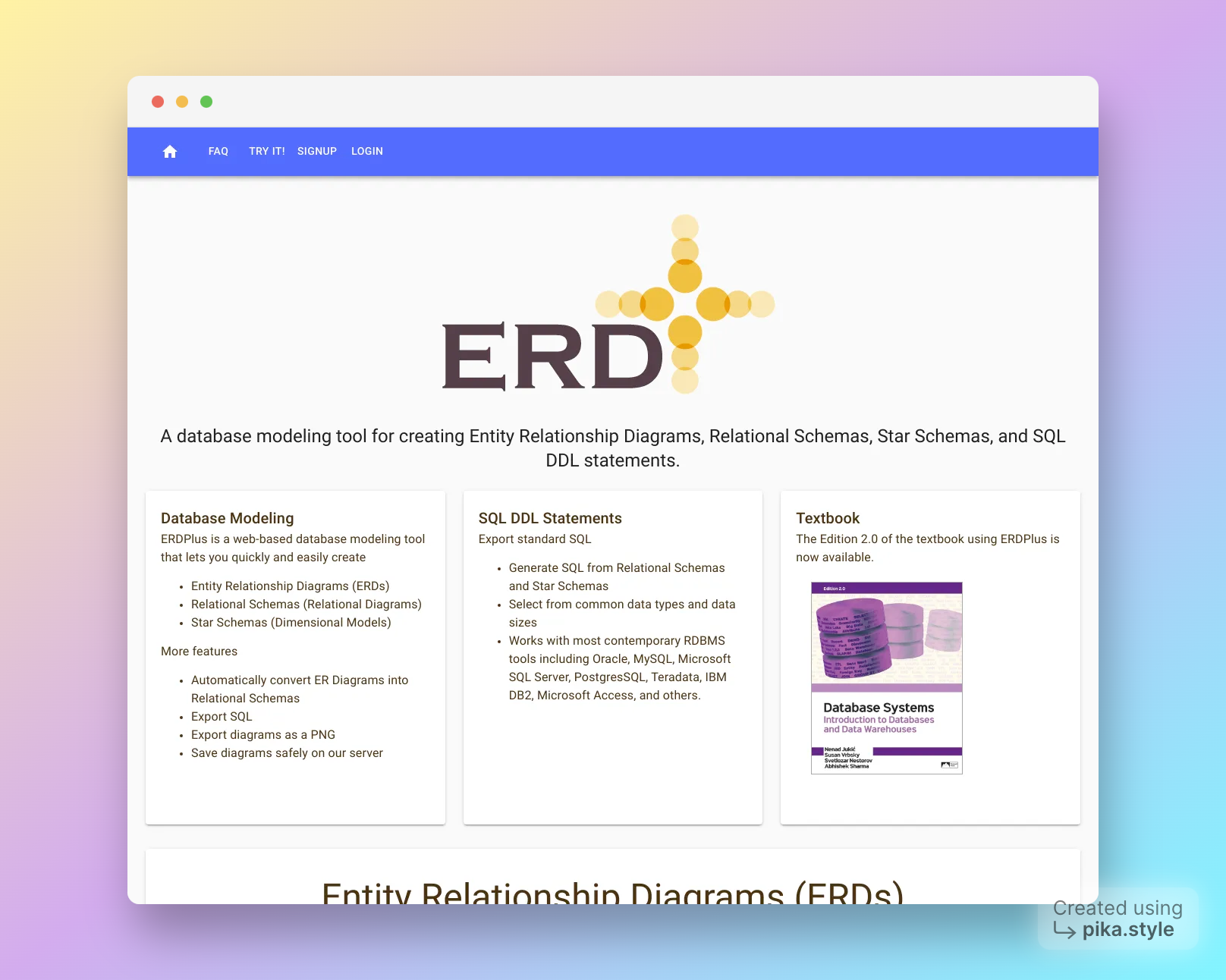
ERD Plus, an education-oriented tool, is an excellent choice for those seeking to learn database diagramming. While it may lack the aesthetic polish of other tools, its simplicity and focus on learning make it a worthwhile resource.
ERD Plus allows you to use all its features once you create an account. Though it is a drag-and-drop tool, it keeps the user interface simple, focusing on the learning aspect. ERD Plus comes with a companion textbook, adding more value to your learning journey.
5. Fast and Efficient Diagramming with QuickDBD
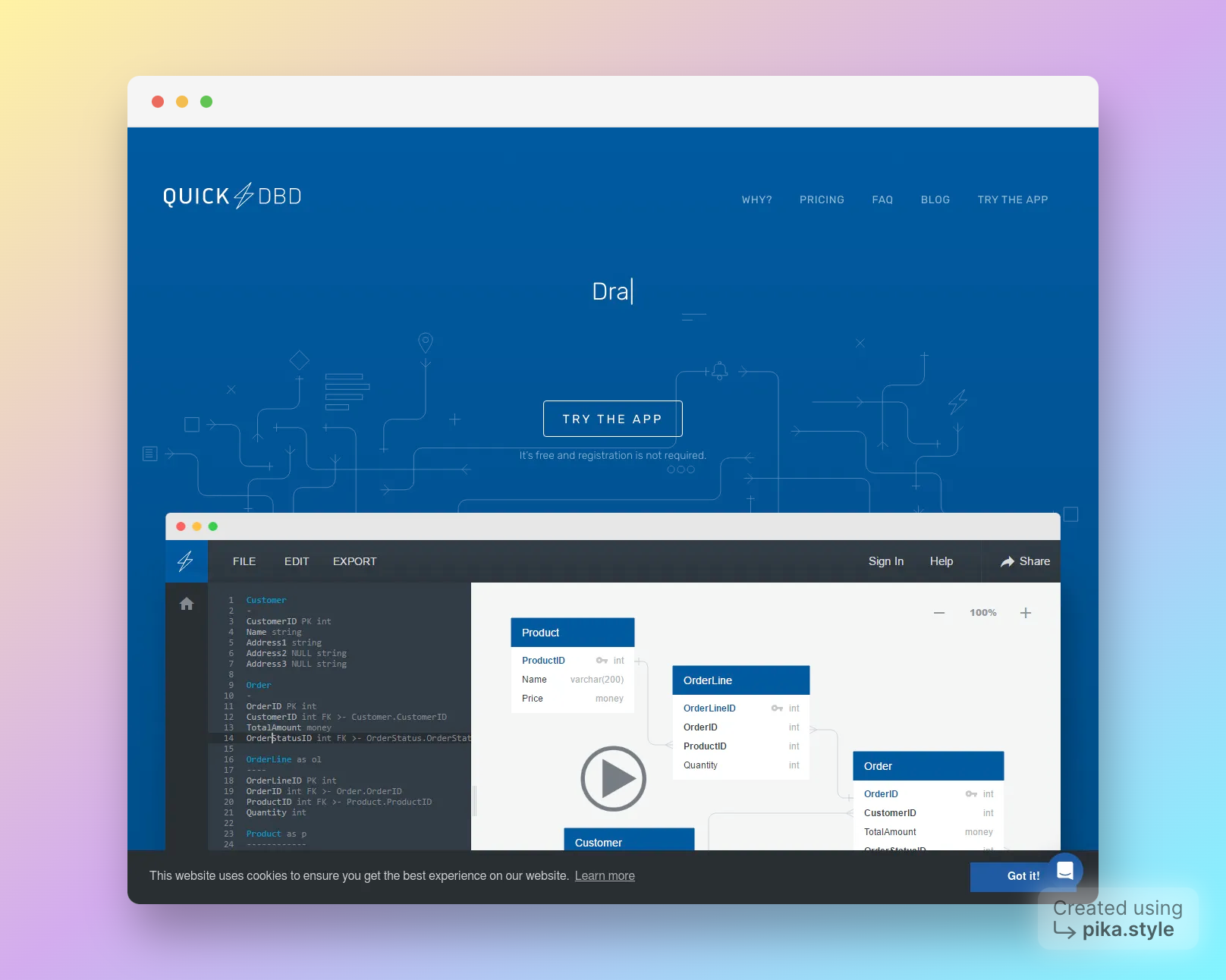
QuickDBD (Quick Database Diagrams) is a tool that prioritizes speed. It uses a blend of coding and drag-and-drop functionality to allow you to create diagrams swiftly.
QuickDBD lets you start diagramming without signing up, but saving your files requires an account. The free version limits you to one diagram, with a Pro plan available for more extensive usage. QuickDBD believes in providing an efficient experience that encourages users to upgrade to the paid version.
6. Mastering MySQL with MySQL Workbench Community Edition
Aimed at MySQL users, the MySQL Workbench Community Edition is more than just a database diagramming tool. It offers a plethora of features, including performance monitoring and SQL query creation.
This tool offers a full-featured drag-and-drop interface, as well as the ability to code your schema directly. While the Community Edition is free, the Enterprise Edition comes with a price tag but includes professional support and consulting.
7. Going No-Code with SqlDBM
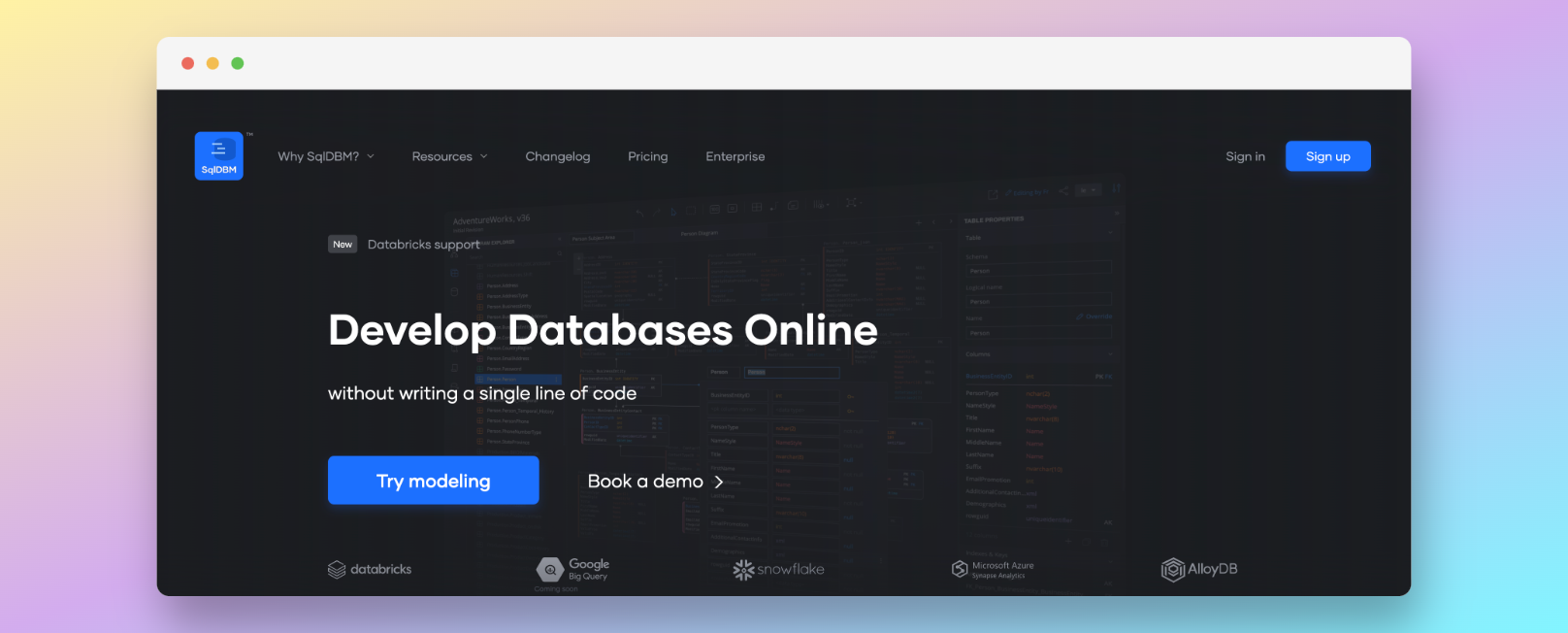
SqlDBM offers a no-code solution to database diagramming. Its free trial offers robust features, allowing you to accomplish a substantial amount of diagramming without spending a dime.
With SqlDBM, you can start with a free trial that offers a fully interactive drag-and-drop interface. If you find the tool beneficial, you can choose one of their paid plans to continue using it.
Maximizing Your Database With Business Intelligence Platforms
Once you've organized your database, a Business Intelligence platform, like Sisense, Power BI, or RATH (opens in a new tab), can help you turn your data into actionable insights. A well-structured database, combined with effective visualization tools, can unlock your data's potential, driving decision-making and strategy in your organization.
Conclusion: Choosing the Right Tool for Your Database Visualization Needs
In the end, the tool you choose for database visualization will depend on your specific needs, technical skill level, and budget. Whether you prefer the simplicity of Diagrams.net, the code-based approach of dbdiagram, or the versatility of Lucidchart, each tool offers unique features that can help you better understand and manage your data architecture.
Remember, while these tools provide a visual representation of your data structure, they are just the beginning. Leveraging a business intelligence platform like Chartio can further enhance your data analysis capabilities, transforming your well-organized database into actionable, insightful dashboards. So, explore these tools, experiment with what works best for your workflow, and step into the world of efficient database management.
